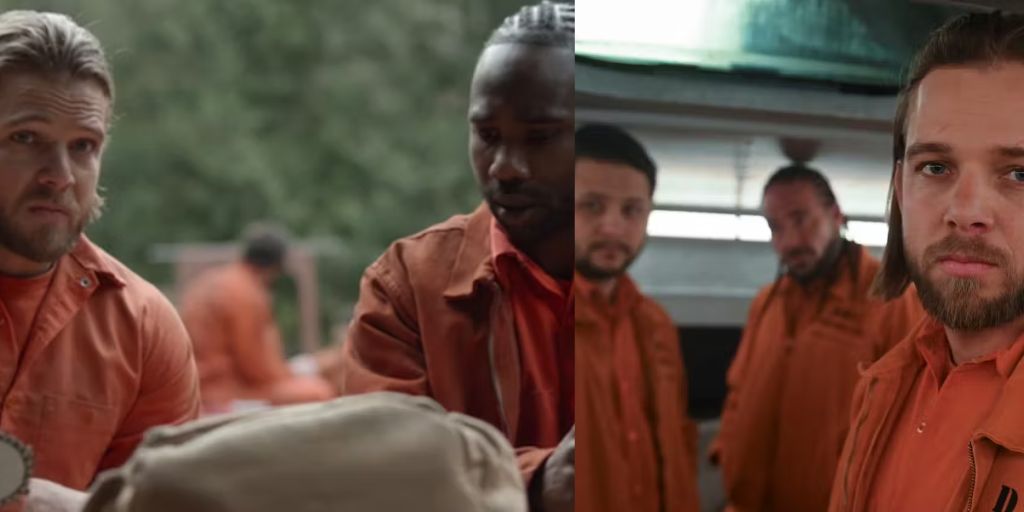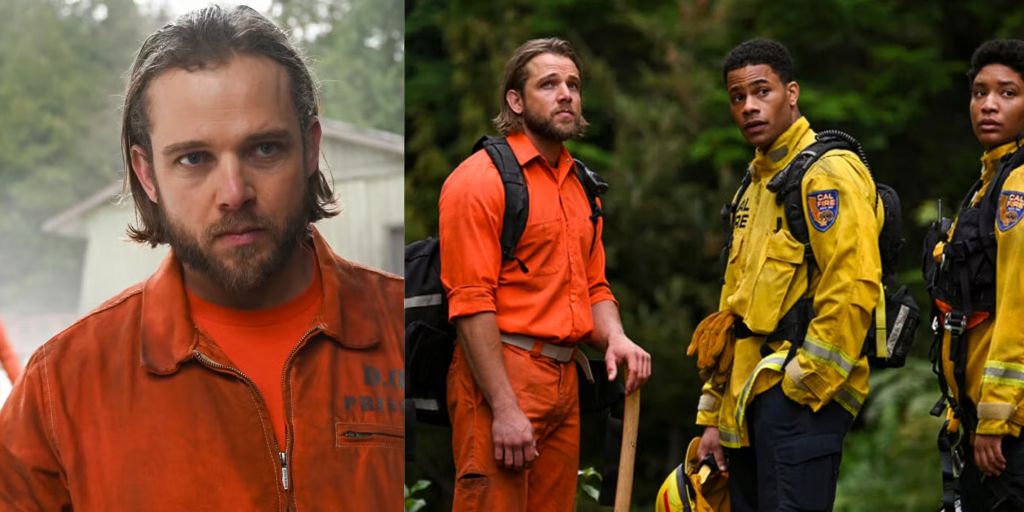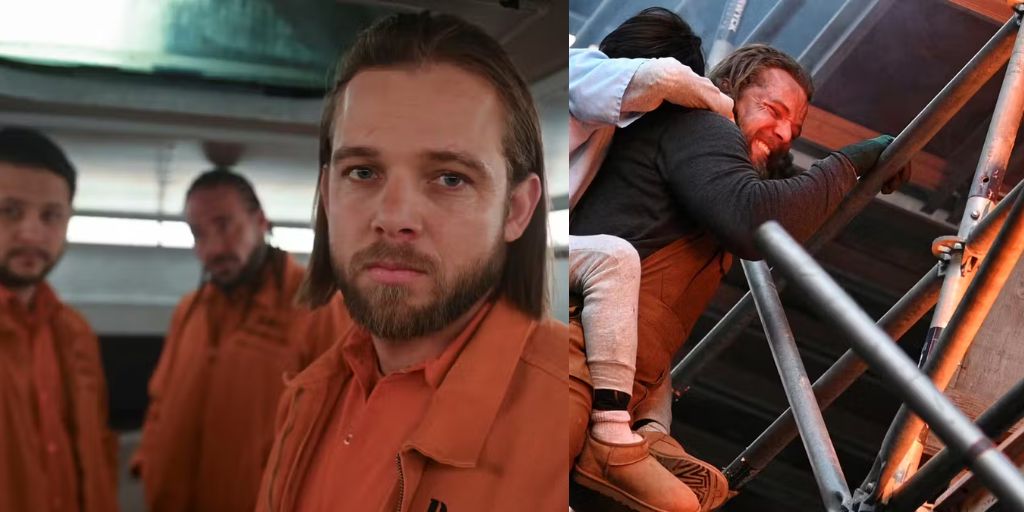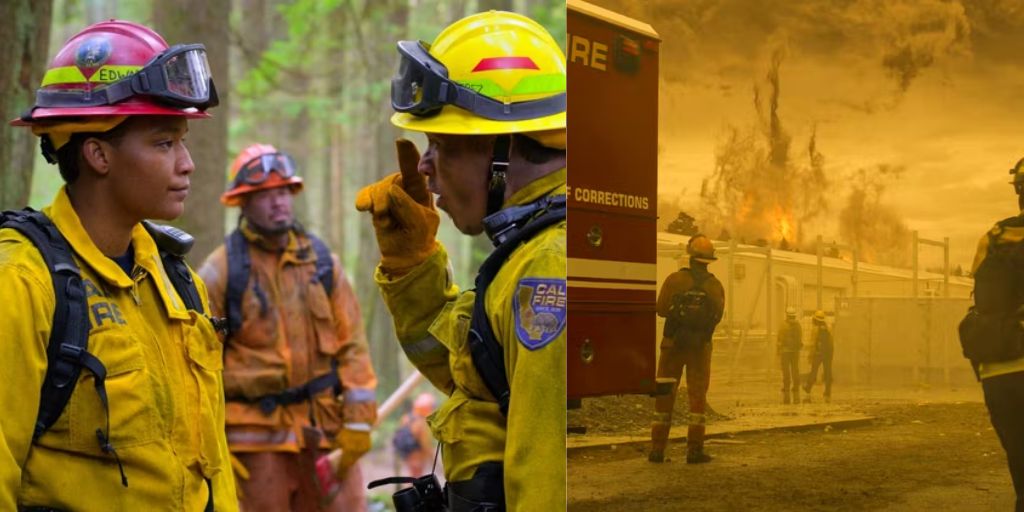As the fall season approaches, Fire Country is preparing for its return, and fans are eagerly anticipating the next chapter in the story set in the fictional town of Edgewater, California.
With the character Bode Leone, portrayed by Max Thieriot, now out of the fictional Three Rock Conservation Camp, there is a sense of excitement about what lies ahead for him. The previous season ended with numerous cliffhangers, leaving viewers on the edge of their seats, eagerly awaiting answers.
Bode’s future decisions are bound to be intriguing, and fans hope they will help him go through challenges without landing him back in trouble.
The Reality Behind Three Rock Conservation Camp
It is essential to clarify that Three Rock Conservation Camp, as depicted in Fire Country, is not based on a real location. Both the town of Edgewater and the camp itself are fictional creations by the show’s co-creators, Max Thieriot, Tony Phelan, and James Rater.
These fictional elements serve as a general representation of Northern California, but they do not exist outside the world of the show. Despite this, the portrayal of the Conservation (Fire) Camp Program in Fire Country draws from real-life aspects of California’s firefighting and inmate work programs.
The actual Conservation (Fire) Camp Program is managed by the California Department of Corrections and Rehabilitation (CDCR), in collaboration with the California Department of Forestry and Fire Protection (Cal Fire) and the Los Angeles County Fire Department (LACFD).
This program includes over 30 camps spread across the state of California. According to the program’s official website, “all camps are minimum-security facilities and staffed with correctional staff,” which closely mirrors the depiction in Fire Country.

On the show, a Cal Fire captain, such as Manny (Kevin Alejandro) or Eve (Jules Latimer), oversees a hand crew of approximately 17 people during firefighting operations. Inmates at the camp are managed by CDCR representatives while they are at the facility.
What the Conservation (Fire) Camp Program Does
The Conservation (Fire) Camp Program provides a unique opportunity for inmates to work alongside professional firefighters in combating fires, managing floods, and addressing other natural disasters across California. Participation in this program is strictly voluntary, and inmates must have no more than eight years remaining on their sentence to be considered eligible.
Those with violent offences, including sexual offences or arson convictions, are not permitted to join. The show has faithfully depicted these aspects, including the distinct orange uniforms worn by the inmates.
The program is designed to provide inmates with practical skills and experience that can be valuable both during their incarceration and after their release.
Working alongside seasoned firefighters, inmates gain hands-on experience in handling various emergencies, which can be a significant advantage when seeking employment after their release. The training provided in the program is rigorous and aims to prepare inmates for the demands of firefighting and emergency response.
Balancing Fact and Fiction in Fire Country
While Fire Country’s depiction of the Conservation Camp Program has garnered attention, it has also faced some criticism, particularly concerning its portrayal of Cal Fire. Despite this, the show has managed to effectively highlight the connection between Cal Fire and the Conservation (Fire) Camp Program.
The historical significance of inmate firefighters in California cannot be understated. A 2022 article published by The Smithsonian sheds light on the history of California’s inmate firefighter program.
It notes that inmate firefighters have been an integral part of California’s firefighting force since World War II, with their numbers fluctuating over the years but often comprising about one-third of the state’s firefighting personnel.
Inmate firefighters face unique risks on the job, including a higher likelihood of injury and smoke inhalation. Despite these dangers, they receive daily compensation ranging from $5.80 to $10.24. During active fires, they earn additional pay, which helps to compensate for the increased risk and hard work.

Moreover, many inmates earn credits toward their release through programs like the 2-for-1 model, which allows them to reduce their sentence. This model provides a tangible incentive for inmates to participate in the program and perform their duties diligently.
After their release, former inmate firefighters have the opportunity to apply for positions with Cal Fire. A felony conviction does not necessarily disqualify them from being hired. This possibility for employment offers a hopeful future for those who have participated in the Conservation (Fire) Camp Program.
Many former inmates have successfully transitioned into careers in firefighting and emergency response, demonstrating the program’s potential to provide a second chance and valuable skills.
Max Thieriot’s Influence on Fire Country
Max Thieriot, the co-creator of Fire Country, has openly discussed how his own experiences growing up in Northern California influenced the creation of the show.
Although Thieriot has never participated in the Conservation (Fire) Camp Program and has no criminal record, his background and connections with people who worked with Cal Fire significantly shaped the series.
Thieriot has shared that seeing conservation camp crews in his hometown and knowing people who worked with Cal Fire provided him with valuable insights into the world of firefighting.
Thieriot’s personal experiences and observations contributed to the show’s authentic portrayal of firefighter life. He has mentioned that growing up in a small town where community members’ lives were closely intertwined helped him understand the dynamics of life in a place like Edgewater.
This understanding has been reflected in the show’s depiction of the Conservation (Fire) Camp Program and the experiences of the characters involved.
The Impact of Fire Country’s Storytelling
Fire Country’s storytelling effectively combines fictional elements with real-life inspiration to create a compelling narrative. By drawing on the experiences of real inmate firefighters and the historical significance of the Conservation (Fire) Camp Program, the show provides viewers with a look into a lesser-known aspect of firefighting.
While Three Rock Conservation Camp itself may not be real, the program it represents has a meaningful impact on the lives of those who participate in it.
The show’s commitment to highlighting the experiences of inmate firefighters adds depth and authenticity to its portrayal of the firefighting community. As Fire Country continues to show the challenges and triumphs of its characters, it also sheds light on the real-life heroes who risk their lives to protect others.
With its engaging storylines and well-crafted characters, Fire Country offers viewers an opportunity to connect with the real-world issues faced by inmate firefighters and the broader firefighting community.

Fire Country is available for streaming on Paramount+, and as the show progresses, viewers can look forward to more stories that honor the real-life experiences of firefighter heroes. The blend of fiction and reality in Fire Country serves to celebrate the dedication and bravery of those who work tirelessly to keep their communities safe, both on screen and in real life.
Fire Country’s portrayal of the fictional Three Rock Conservation Camp is rooted in the real Conservation (Fire) Camp Program, showcasing a unique blend of fiction and reality. While Edgewater and its camp are creations of the show’s writers, they reflect the true challenges and contributions of California’s inmate firefighters.
Through its engaging narrative and authentic representation, Fire Country highlights the dedication and bravery of those who work to protect their communities. As the series continues, it promises to deliver more compelling stories that honor the real-life heroes of firefighting and bring attention to their significant contributions.





